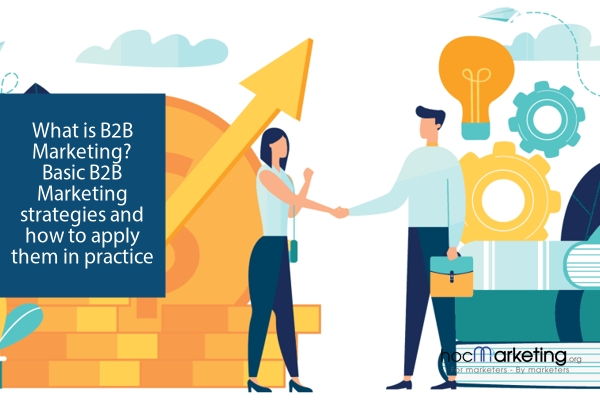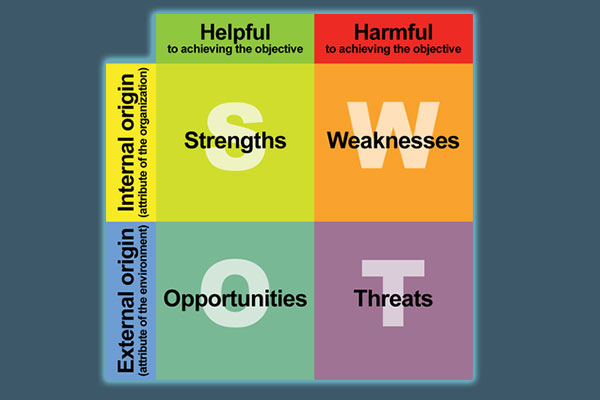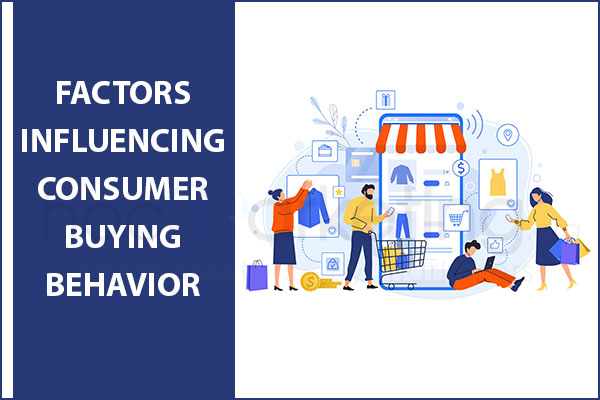
What is B2B Marketing? Basic B2B Marketing strategies and how to apply them in practice

Learn about the basics of B2B marketing strategies and how to apply them in practice. Discover how to identify your target audience, create high-quality content, build relationships with prospects, and use social media effectively. Develop a marketing plan, create a sales funnel, and measure and analyze your results to succeed in B2B marketing.
Welcome to our blog post about B2B marketing! In this article, we'll be exploring what B2B marketing is, as well as some basic strategies that you can use to start applying it in your own business. Whether you're just starting out or looking to improve your existing B2B marketing efforts, this post has something for you. We'll also be discussing some of the challenges and opportunities that come with B2B marketing, so you can be prepared to tackle them head-on. So, let's dive in!
1. What is B2B Marketing?
B2B marketing, short for business-to-business marketing, is the practice of promoting goods or services to other businesses or organizations. Unlike B2C marketing, which targets individual consumers, B2B marketing aims to appeal to the needs and interests of other businesses, with the ultimate goal of generating leads and closing deals. B2B marketing strategies can be different from B2C marketing in terms of target audience, messaging, and tactics used to reach potential customers. In this article, we will explore the basics of B2B marketing, including key strategies and practical steps to implement them effectively.
2. Basic B2B Marketing Strategies
To successfully market to other businesses, companies need to employ specific B2B marketing strategies. These strategies differ from those used in B2C marketing because they target a different audience with different needs and motivations. In this section, we will explore the basic B2B marketing strategies that companies can use to attract and convert prospects into customers.
The first strategy is identifying the target audience. This involves understanding the companies and individuals that are most likely to need and benefit from the product or service being offered. Once the target audience is identified, companies can tailor their messaging and marketing efforts to resonate with their needs and pain points.
The second strategy is developing a unique selling proposition (USP). A USP is a statement that clearly communicates what makes a product or service unique and why it is better than the competition. A strong USP can differentiate a company from its competitors and help it stand out in a crowded market.
Creating high-quality content is the third strategy. B2B buyers are often looking for information to help them make informed decisions, so companies need to provide them with relevant and valuable content. This can include blog posts, case studies, whitepapers, and other types of content that educate and inform prospects about the product or service being offered.
Building relationships with prospects is the fourth strategy. B2B sales cycles are often longer than B2C sales cycles, so companies need to invest time and effort into building relationships with prospects. This can involve providing personalized experiences, offering exceptional customer service, and maintaining regular communication with prospects throughout the sales process.
Finally, using social media effectively is the fifth basic B2B marketing strategy. Social media platforms are valuable tools for B2B marketers because they allow companies to connect with prospects, share content, and build brand awareness. However, it is important to use social media strategically and focus on the platforms that are most popular among the target audience.
Identifying Target Audience
One of the most important aspects of B2B marketing is identifying the target audience. Unlike B2C marketing, where the target audience is usually broader, B2B marketing targets a specific group of people or companies. To effectively reach this audience, it is crucial to understand their needs, preferences, and pain points.
To identify the target audience, start by analyzing the company's current customer base. Look for common characteristics such as industry, company size, location, and job titles. This information can help create buyer personas, which are fictional representations of the ideal customer.
Another effective way to identify the target audience is to conduct market research. This can include surveys, focus groups, and customer feedback. By gathering insights from existing and potential customers, businesses can gain a better understanding of their needs and preferences.
Once the target audience has been identified, the next step is to segment them into groups based on their needs and behaviors. This allows businesses to create targeted marketing campaigns that resonate with each group. For example, a software company may segment its target audience into small businesses and large enterprises, each with different needs and preferences.
Overall, identifying the target audience is a crucial step in B2B marketing. By understanding the needs and preferences of the target audience, businesses can create effective marketing campaigns that generate leads and drive sales.
Developing a Unique Selling Proposition
Developing a Unique Selling Proposition is a crucial step in B2B marketing. A unique selling proposition (USP) is a statement that describes what sets your product or service apart from the competition. It should clearly communicate the benefits of your product or service and why it is the best choice for potential customers. The USP should be concise and memorable, and it should resonate with your target audience.
To develop a USP, you should start by identifying your target audience and understanding their needs and pain points. This will help you to create messaging that speaks directly to their concerns. You should also research your competition to see what they are offering and how you can differentiate yourself from them.
Once you have a clear understanding of your audience and competition, you can start brainstorming ideas for your USP. Look for ways to highlight the unique features and benefits of your product or service. Consider what makes your offering different from other solutions on the market. Think about the problems you are solving and the value you are providing to your customers.
When developing your USP, remember to keep it simple and straightforward. Avoid using technical jargon or complex language that may confuse your audience. Your USP should be easy to understand and communicate the key benefits of your product or service in a clear and concise way.
Overall, developing a strong USP is an essential part of B2B marketing. It helps you to stand out from the competition and communicate the unique benefits of your offering to potential customers. By taking the time to develop a compelling USP, you can increase your chances of success in the competitive B2B marketplace.
Creating High-Quality Content
Creating high-quality content is a crucial aspect of B2B marketing. In today's digital age, businesses are bombarded with information from various sources. Therefore, it is essential to create content that not only grabs the attention of your target audience but also provides value to them. High-quality content can help establish your brand as a thought leader in your industry, increase your website traffic, and generate leads.
One way to create high-quality content is by understanding your target audience's pain points and offering solutions through your content. Your content should be relevant to your audience's needs and provide them with actionable insights that they can implement in their business. Additionally, your content should be well-researched and fact-checked to ensure that it is accurate and trustworthy.
Another important aspect of creating high-quality content is to ensure that it is visually appealing and easy to consume. This can be achieved by using relevant images, videos, and infographics to supplement your content. Additionally, your content should be formatted in a way that is easy to read, with clear headings and subheadings, bullet points, and short paragraphs.
Finally, it is essential to distribute your content effectively to reach your target audience. This can be done through various channels such as social media, email marketing, and content syndication. By consistently creating and distributing high-quality content, you can establish your brand as a thought leader in your industry, attract new prospects, and ultimately drive business growth.
Building Relationships with Prospects
Building relationships with prospects is a crucial aspect of B2B marketing. It involves establishing and maintaining meaningful connections with potential customers as a means to build trust, credibility, and ultimately, business. The process of building relationships with prospects is not a one-time effort, but a continuous one that requires a consistent and strategic approach. In this section, we will explore the importance of building relationships with prospects and some effective ways to do so.
One of the most effective ways to build relationships with prospects is through personalized interactions. Personalization involves tailoring your communication and marketing efforts to suit the needs and preferences of your target audience. This can be achieved by segmenting your target audience based on factors such as demographics, interests, and behavior. Once you have identified your target audience segments, you can create personalized content and messaging that resonates with each group.
Another effective way to build relationships with prospects is through thought leadership. Thought leadership involves establishing yourself or your brand as an authority in your industry by sharing valuable insights and expertise. This can be done through various channels such as blog posts, whitepapers, webinars, and speaking engagements. By providing valuable information and insights, you can position yourself as a trusted resource and build credibility with your target audience.
In addition to personalized interactions and thought leadership, building relationships with prospects also requires a focus on customer experience. This involves creating a seamless and positive experience for prospects at every touchpoint, from initial contact to post-sale support. By providing exceptional customer service and support, you can build trust and loyalty with your prospects and increase the likelihood of repeat business and referrals.
Overall, building relationships with prospects is a critical component of B2B marketing. By taking a personalized, thought leadership-focused, and customer-centric approach, you can establish meaningful connections with your target audience and ultimately drive business growth.
Using Social Media Effectively
The use of social media in B2B marketing has become increasingly important in recent years. Social media platforms such as LinkedIn, Twitter, and Facebook provide businesses with the opportunity to connect with their target audience on a more personal level and build relationships with potential prospects. However, it is important to use social media effectively and strategically in order to see results.
One way to use social media effectively in B2B marketing is by creating a strong social media presence. This includes having well-crafted profiles on each platform that accurately represent your brand and provide valuable information to potential prospects. It is also important to regularly post high-quality content that is relevant to your audience and engages them in a meaningful way.
Another way to use social media effectively is by engaging with your audience. This means responding to comments, messages, and other forms of engagement in a timely and professional manner. It is also important to actively seek out new connections and engage with other businesses and individuals in your industry.
Finally, social media can be used to drive traffic to your website and generate leads. This can be done through the use of targeted advertising, promoting your content on social media, and providing opportunities for your audience to sign up for your email list or request more information about your products or services.
Overall, social media can be a powerful tool for B2B marketing if used effectively. By creating a strong social media presence, engaging with your audience, and using social media to drive traffic and generate leads, businesses can successfully reach and connect with their target audience in a meaningful way.
3. Steps to Apply B2B Marketing Strategies in Practice
To effectively apply B2B marketing strategies in practice, there are several steps that businesses must take. Firstly, conducting market research is vital in order to understand the needs and pain points of the target audience. This involves analyzing industry trends, competitor strategies, and customer feedback to identify gaps in the market that your business can fill. Once this research has been completed, businesses can move on to developing a marketing plan that outlines the specific tactics and channels that will be used to reach the target audience.
Creating a sales funnel is another important step in B2B marketing. This involves mapping out the customer journey from initial awareness through to conversion and beyond. By identifying the touchpoints along this journey, businesses can tailor their marketing efforts to meet the needs of prospects at each stage. For example, a prospect who is just becoming aware of your brand may need more educational content, while a prospect who is further along in the funnel may be ready for a sales call or product demo.
Measuring and analyzing results is also crucial in B2B marketing. By tracking key metrics such as website traffic, lead generation, and sales revenue, businesses can determine which marketing tactics are most effective and make data-driven decisions about where to allocate resources. This also allows businesses to continuously optimize their marketing efforts over time, ensuring that they are always delivering the best possible results.
Overall, applying B2B marketing strategies in practice requires a systematic approach that involves market research, developing a marketing plan, creating a sales funnel, and measuring and analyzing results. By following these steps, businesses can attract and convert high-quality leads, build strong relationships with customers, and ultimately grow their bottom line.
Conducting Market Research
Conducting market research is a crucial step in developing an effective B2B marketing strategy. It involves gathering and analyzing information about the market, industry trends, competitors, and target customers. By conducting market research, businesses can identify their strengths and weaknesses, as well as opportunities and threats in the market.
To conduct market research, B2B marketers can use a variety of methods such as surveys, focus groups, interviews, and online research. Surveys are an effective way to gather quantitative data from a large sample of respondents, while focus groups and interviews can provide more in-depth qualitative insights from a smaller group of participants. Online research can include analyzing website traffic, social media engagement, and industry reports.
Once the data is collected, B2B marketers can use it to identify the needs and preferences of their target audience, as well as their buying behavior and decision-making process. This information can then be used to develop a marketing strategy that is tailored to the specific needs and preferences of the target audience.
In addition to gathering information about the target audience, B2B marketers should also conduct research on their competitors. This involves analyzing their strengths and weaknesses, as well as their marketing strategies and tactics. By understanding their competitors, B2B marketers can develop a marketing strategy that differentiates their business and offers a unique value proposition.
Overall, conducting market research is a critical step in developing an effective B2B marketing strategy. By gathering and analyzing information about the market, industry trends, competitors, and target customers, B2B marketers can develop a marketing strategy that is tailored to the specific needs and preferences of their target audience, and offers a unique value proposition that differentiates their business from competitors.
Developing a Marketing Plan
Developing a marketing plan is a crucial step in any B2B marketing strategy. A marketing plan outlines the approach and tactics that will be used to reach the target audience and achieve business objectives. It serves as a roadmap for the marketing team and helps to ensure that efforts are coordinated and aligned with the overall business strategy.
The first step in developing a marketing plan is to define the target audience. This involves identifying the characteristics of the ideal customer and understanding their needs and pain points. Once the target audience has been defined, the next step is to determine the best channels and tactics to reach them. This may include social media, email marketing, content marketing, or other methods.
Another important element of a marketing plan is setting goals and objectives. These should be specific, measurable, and aligned with overall business objectives. For example, a goal might be to increase leads by 20% over the next six months, or to generate a certain amount of revenue from a particular product or service.
The marketing plan should also include a budget and timeline for implementation. This will help to ensure that resources are allocated effectively and that deadlines are met. It is also important to assign responsibilities and accountabilities to specific team members to ensure that everyone is clear on their roles and responsibilities.
Finally, it is important to regularly review and update the marketing plan to ensure that it remains relevant and effective. This may involve analyzing results and making adjustments based on feedback from customers or changes in the marketplace. By following these steps, businesses can develop a marketing plan that is tailored to their specific needs and objectives, and that helps to drive growth and success.
Creating a Sales Funnel
Creating a Sales Funnel is one of the essential strategies in B2B marketing. A Sales Funnel is a visual representation of the journey that potential customers take before making a purchase. It is a step-by-step process that helps businesses turn prospects into customers. A well-designed Sales Funnel enables businesses to identify where customers are in the buying process, what their needs and pain points are, and how they can be addressed. In this section, we will discuss how to create a Sales Funnel and what steps businesses can take to ensure its success.
The first step in creating a Sales Funnel is to identify the different stages of the buying process. These stages may vary depending on the type of business and the products or services offered. However, some of the common stages include awareness, interest, consideration, decision, and retention. Once these stages are identified, the next step is to create a plan that will guide prospects through each stage of the funnel.
The next step is to develop a lead magnet, which is a valuable piece of content that prospects can download in exchange for their contact information. This lead magnet should be related to the business's products or services and should provide value to the prospect. Examples of lead magnets include e-books, whitepapers, webinars, and case studies. Once the lead magnet is created, businesses can use it to attract prospects and move them through the Sales Funnel.
After the lead magnet is created, the next step is to design a landing page that showcases the lead magnet and entices prospects to download it. The landing page should be visually appealing, easy to navigate, and should clearly communicate the benefits of the lead magnet. Businesses can also use social proof, such as customer testimonials or reviews, to increase the landing page's effectiveness.
Once prospects have downloaded the lead magnet, they should be directed to a thank-you page that confirms their download and provides additional information about the business's products or services. The thank-you page can also include a call-to-action that encourages prospects to take the next step in the Sales Funnel, such as scheduling a consultation or signing up for a free trial.
In conclusion, creating a Sales Funnel is a crucial component of B2B marketing. A well-designed Sales Funnel can help businesses attract, engage, and convert prospects into customers. By identifying the different stages of the buying process, developing a lead magnet, creating a landing page, and designing a thank-you page, businesses can successfully guide prospects through the Sales Funnel and increase their chances of making a sale.
Measuring and Analyzing Results
To ensure the effectiveness of B2B marketing strategies, it is crucial to measure and analyze the results. This allows businesses to identify which tactics are working and which ones need improvement. Measuring and analyzing results involves tracking key performance indicators (KPIs) such as website traffic, lead generation, conversion rates, and customer retention. By monitoring these metrics, businesses can gain insights into their target audience's behavior and preferences, as well as the effectiveness of their marketing efforts.
One effective way to measure the results of B2B marketing is through A/B testing. This involves creating two versions of a marketing campaign and testing them against each other to see which one performs better. For example, a business may create two versions of an email campaign with different subject lines to see which one generates more opens and clicks. By analyzing the results of A/B testing, businesses can make data-driven decisions and optimize their marketing strategies for maximum impact.
Another important aspect of measuring and analyzing results is tracking return on investment (ROI). This involves calculating the amount of revenue generated from a marketing campaign compared to the cost of running it. By tracking ROI, businesses can determine which marketing channels are most effective and allocate their budget accordingly. Additionally, ROI analysis can help businesses identify areas where they can reduce costs and increase profitability.
Overall, measuring and analyzing results is an essential part of B2B marketing. By tracking KPIs, conducting A/B testing, and calculating ROI, businesses can optimize their marketing strategies and achieve their goals. However, it is important to remember that measuring results is an ongoing process that requires constant monitoring and adjustment. By staying up-to-date with the latest trends and technologies, businesses can stay ahead of the competition and achieve long-term success.
4. Challenges and Opportunities in B2B Marketing
B2B marketing is a complex and challenging field with a wide range of opportunities and difficulties. One of the biggest challenges facing B2B marketers is the need to constantly adapt to changing market conditions, customer demands, and technological advancements. This requires a deep understanding of the market, the competition, and the needs of the target audience. Another major challenge is the need to generate high-quality leads and convert them into loyal customers. This requires a strategic approach to marketing, a deep understanding of the customer journey, and the ability to create compelling content that resonates with the target audience.
Despite these challenges, there are also many opportunities in B2B marketing. These include the ability to build strong relationships with customers, the potential to create innovative products and services that meet the needs of the market, and the opportunity to leverage data and analytics to gain insights into customer behavior and preferences. Another major opportunity is the ability to leverage social media and other digital marketing channels to reach a wider audience and build brand awareness.
To succeed in B2B marketing, it is essential to stay up-to-date with the latest trends, best practices, and technologies. This requires a commitment to ongoing learning and development, as well as a willingness to experiment with new approaches and strategies. It also requires a deep understanding of the customer journey, the ability to create compelling content that resonates with the target audience, and the ability to measure and analyze the results of marketing campaigns. With the right approach, B2B marketers can overcome the challenges and seize the opportunities presented by this dynamic and exciting field.
Summary
In conclusion, B2B marketing is a complex but essential aspect of any successful business. By understanding the basic strategies and implementing them effectively, companies can establish long-term relationships with their clients and generate higher revenue. It is important to keep up with the latest trends and technologies in B2B marketing and continuously adapt to the changing landscape. With the right mindset and approach, any business can thrive in the B2B market.















